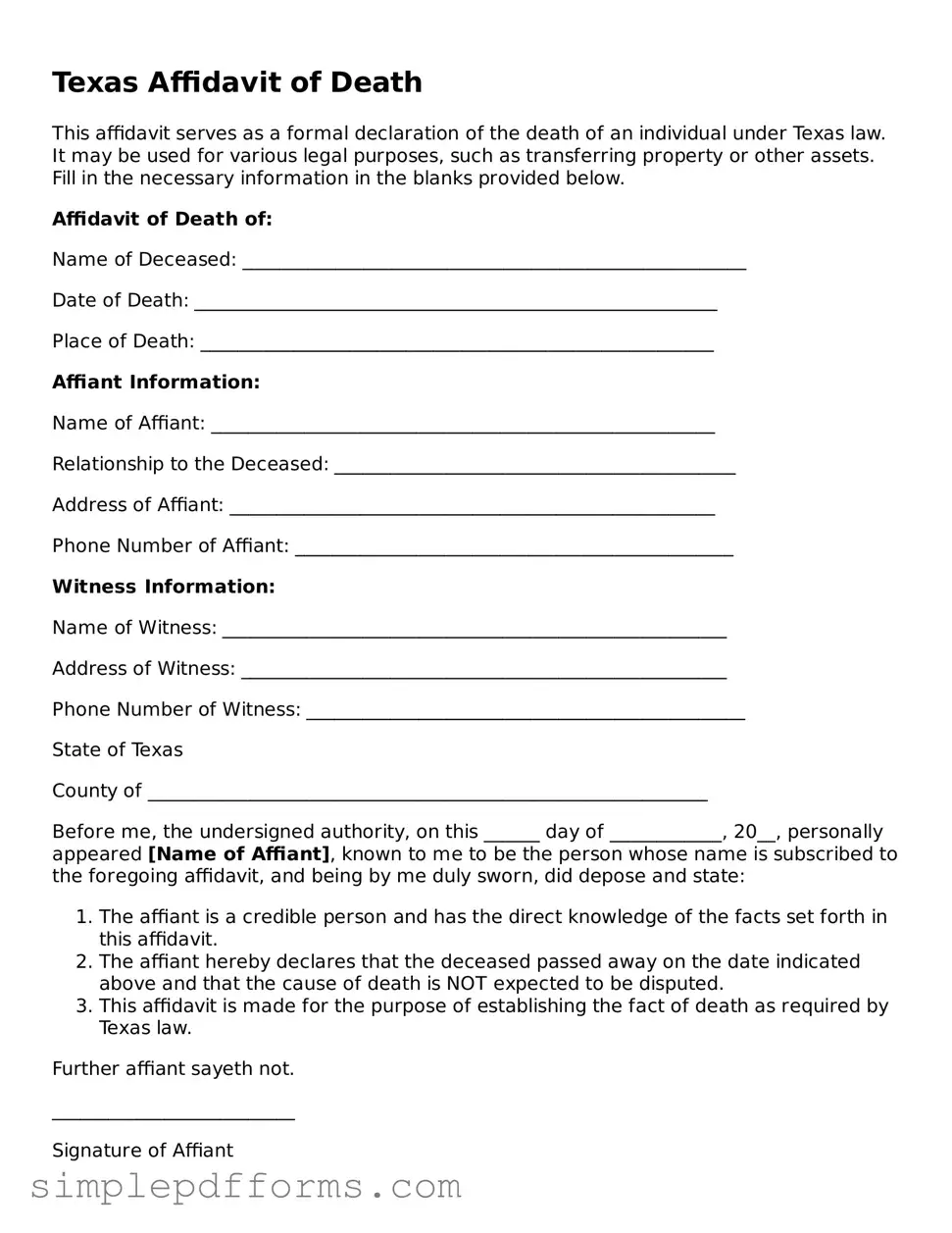Texas Affidavit of Death
This affidavit serves as a formal declaration of the death of an individual under Texas law. It may be used for various legal purposes, such as transferring property or other assets. Fill in the necessary information in the blanks provided below.
Affidavit of Death of:
Name of Deceased: ______________________________________________________
Date of Death: ________________________________________________________
Place of Death: _______________________________________________________
Affiant Information:
Name of Affiant: ______________________________________________________
Relationship to the Deceased: ___________________________________________
Address of Affiant: ____________________________________________________
Phone Number of Affiant: _______________________________________________
Witness Information:
Name of Witness: ______________________________________________________
Address of Witness: ____________________________________________________
Phone Number of Witness: _______________________________________________
State of Texas
County of ____________________________________________________________
Before me, the undersigned authority, on this ______ day of ____________, 20__, personally appeared [Name of Affiant], known to me to be the person whose name is subscribed to the foregoing affidavit, and being by me duly sworn, did depose and state:
- The affiant is a credible person and has the direct knowledge of the facts set forth in this affidavit.
- The affiant hereby declares that the deceased passed away on the date indicated above and that the cause of death is NOT expected to be disputed.
- This affidavit is made for the purpose of establishing the fact of death as required by Texas law.
Further affiant sayeth not.
__________________________
Signature of Affiant
__________________________
Notary Public in and for the State of Texas
My commission expires: ______________
